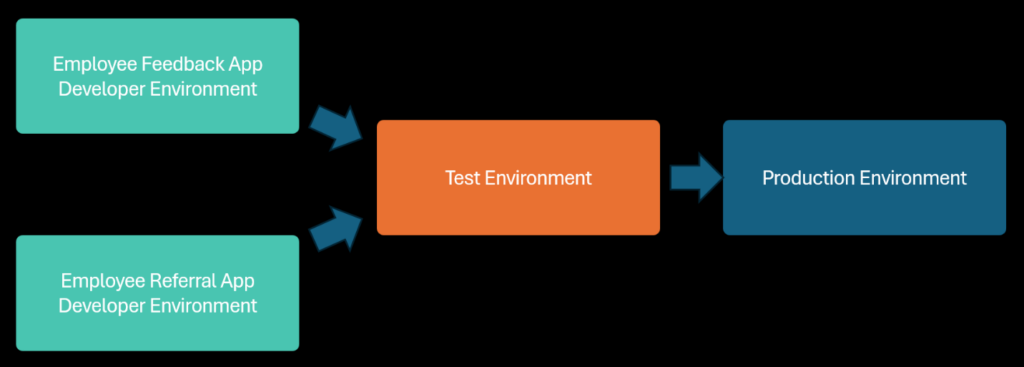

So, digital transformation is evolving, the structure of your Power Platform environment is as crucial as the solutions you build on it. From streamlining development processes to ensuring data integrity and security, a well-planned environment strategy is foundational to getting the most out of the Power Platform. Here’s what a scalable environment strategy looks like and why it’s essential for organizations embracing low-code solutions.
Why Environment Strategy Matters for Power Platform Success
When we talk about Power Platform environments, we’re referring to more than just a virtual space for building apps, automations, and workflows. An effective environment strategy outlines how to organize and manage these spaces, aligning them with organizational goals, compliance requirements, and user needs. Without a clear strategy, even the best-built apps and automations can run into roadblocks, from data inconsistencies to limited user adoption.
A strategic approach to environments ensures that your solutions remain secure, scalable, and adaptable as your organization grows.

Key Components of an Effective Environment Strategy
The Microsoft Power Platform guidance outlines key considerations for an environment strategy that supports scalability, control, and performance. Here’s a breakdown of the essential elements to keep in mind:
- Environment Types and Use Cases
Start by defining the purpose of each environment type—Development, Testing, Production, etc. Each environment should have a clear role, enabling teams to control where and how solutions are built, tested, and launched. This structure reduces cross-environment disruptions and supports a smooth workflow from creation to deployment.
- Data and Security Boundaries
Managing data access and security within each environment is critical. Power Platform allows for tailored data policies that restrict or permit data based on environment use. By defining these boundaries early, organizations can prevent data leaks and ensure compliance with regulations. For instance, sensitive data can be limited to specific environments, allowing only authorized users access.
- Governance and Monitoring
Environment governance is essential for tracking usage, maintaining compliance, and identifying improvement areas. Regular monitoring and auditing tools, like Power Platform Admin Center, empower administrators to keep an eye on environment health and proactively address issues. Governance isn’t a one-time activity; it’s an ongoing process that evolves as your organization and technology needs grow.
- Lifecycle Management and Maintenance
Environments should be managed as living spaces, regularly updated and optimized. Setting up a lifecycle management plan ensures that environments are maintained over time, from archiving unused assets to updating security settings as needs change. Regular maintenance reduces clutter and keeps environments efficient and manageable.
- User Roles and Permissions
To prevent errors and secure data, define clear roles within each environment. By specifying which users can create, modify, or delete solutions, organizations can manage access and maintain control. A structured approach to roles and permissions builds a culture of accountability and prevents accidental changes to critical assets.

The Benefits: Streamlined Operations and Better Collaboration
With an environment strategy in place, organizations can streamline development processes, reduce friction, and promote collaboration. When each team knows where to work, how to manage data, and what controls are in place, they can focus on innovation without second-guessing infrastructure decisions. An organized environment also boosts confidence for stakeholders, knowing that solutions are built within a well-governed, secure framework.
Building an Environment Strategy for the Long Haul
Creating an environment strategy isn’t just about the immediate benefits; it’s about setting your organization up for long-term success. As the organization scales and user needs evolve, a well-thought-out strategy can flex and adapt, meeting new demands without compromising performance or security.
If your organization is looking to maximize the Power Platform’s potential, it’s worth investing time in a scalable, secure environment strategy. By establishing clear guidelines for development, data management, and governance, you can create a strong foundation that supports growth and drives impactful solutions.
